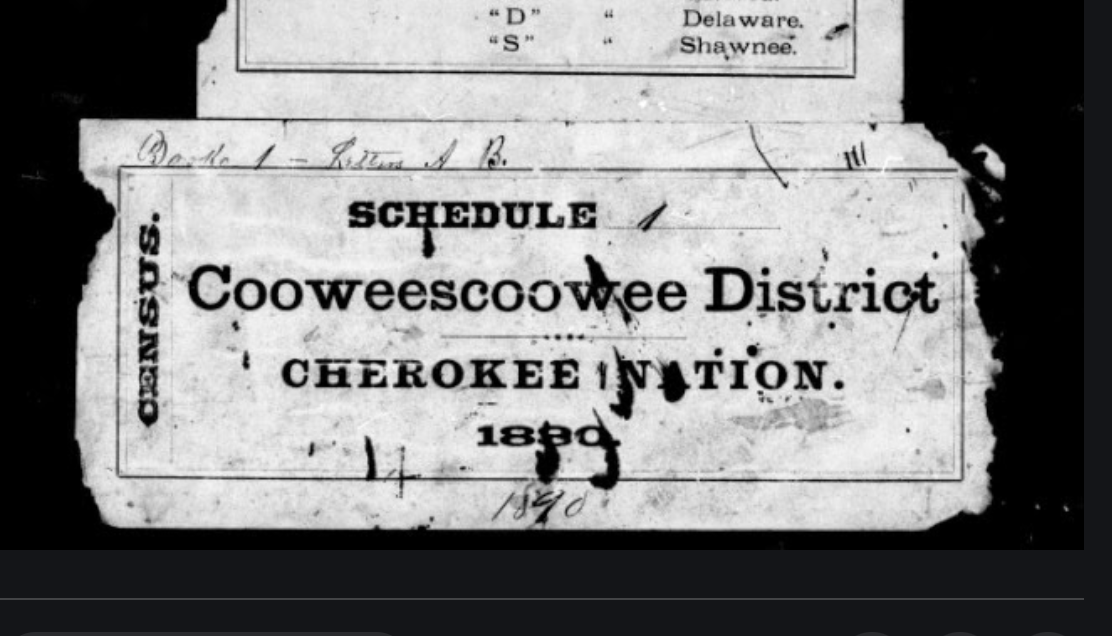Telling the History of Claremore…one story at a time
Part I and II by Myron A. Hurd; This article was first written for the Ranchman magazine and appeared in the November 1961 issue.
Probably no area in Oklahoma enjoys a more fascinating history than Cooweescoowee District, Cherokee Nation, which encompasses the area referred to as “The Will Rogers Country.” It’s modern version as we know it began about 144 years ago when Jean Pierre Chouteau persuaded some of the Osage Indians, with whom he held exclusive trading rights from the French government, to move from their Osage River homes in Kansas and Missouri to this area. He established a trading post at Salina on Grand River in 1796 to keep them supplied and buy their furs. This was 7 years before U. S. government acquired title to this area (1803) through the Louisiana Purchase.
The supply of wild game in Oklahoma about this time was reported to be inexhaustible. When Washington Irving visited Pierre Chouteau at Salina about 1832 and wrote his “Tour of the Prairies,” after accompanying some of the men on a hunting expedition, he described the prairies as a tall grass country rich in wild game and wild horses. The horses had propagated from the Spanish horses which had escaped from explorers on previous journey in the prairies and plains country.
The Osages settled along the rivers and creeks in villages such as Claremont’s “Pasuga” near Claremore Mound about 1817 and Black Dog’s village on Dog Creek (named for the chief) near the present Claremore Cemetery. Chouteau’s post at Salina was the social and cultural center of this entire area.
After the Louisiana Purchase in 1803 agitation began in the southeastern states for removal of the Five Civilized Tribes, the Cherokees, Choctaws, Chickasaws, Creeks and Seminoles to these western lands. Some of the Cherokees foresaw the enforced removal coming and voluntarily emigrated to lands set aside for them between 1810 and 1820. Most them settled east of Grand River and were later referred to as the “Old Settlers.”
It was hunting parties from these old settler Cherokees who engaged bands of Osages in battle skirmishes from time to time. The Osages reportedly whipped a band of Cherokees near the Arkansas border and the Cherokees retaliated by killing many Osages in the battle of Claremore Mound about 1819.
The late “Uncle” Monte Price’s version of this battle, as told to him by one of his relatives who participated, was that they killed many Osages in a running fight toward the mound, they killed more of them on top of the mound, and ran the rest into the swollen Verdigris River where only a few escaped from drowning. The Cherokees were armed with guns while the Osages had only bows and arrows, he said.
The Osage version of this battle was that their men folks were away on a hunting party and that only a few old men and women and children were there to resist the attack.
Dr. Cal Chapman, Anthropologist from the University of Missouri, who is writing a book on the history of the Osages, came to Art Hanes farm recently looking for the location of Claremore’s village. Having examined the archives in Washington, D. C. and read the account by missionaries, he knew where to come, where to look and what to look for. He and Forrest Hanes, Art’s son, strode up over Claremore Mound on a cloudy, soggy day. At the east edge, Chapman paused and remarked “yonder looks like what we are looking for.” They walked down the east slope and out into Charles Green’s field a ways where Dr. Chapman began picking up Indian relics, thus verifying the presence of an Osage village long ago.
Fort Gibson was established in 1824, according to historian, Grant Foreman, to help curb the warlike tendencies of the Osages. By the time of the enforced removal of the Cherokees to Cherokee Nation (west) over the “Trail of Tears” between 1837 and 1840, the Osages were pretty well confined on their Reservation with the Osage Agency (now Pawhuska) as trade and governing center.
Most of white man’s wares for trading with Indians came up the Arkansas River by boat to Ft. Smith and Fort Gibson, and over the Osage Agency Trail through Will Rogers Country near present Claremore.
The Cherokees were reluctant to settle on the prairies of Cooweescoowee District because they were so lonely, compared to the lovely hills where they lived in Georgia and North Carolina. Elijah Hicks was one of the first to settle near Claremore in 1842. He kept a surplus of supplies for resale in other emigrants who ran short. According to Emmett Starr, there were about 30 Cherokee children in Mt. Claremore School (about 4 miles north of present Claremore) in 1858 and 1859, with Nancy Jane Rider as teacher.
Part II
There were probably no pretentious Cherokee homes in the Will Rogers Country prior to the War Between the States. While the Cherokee men folks were away at war, some in northern armies and some in southern, outlaws, renegades, deserters and bush whackers over ran the country and drove off all livestock, burned most building and practically reverted the land to its virgin state. In the case of the John Chambers family of the Verdigris community, the women and children walked to Tahlequah with just what possessions they could carry, for renegades had stolen all of their livestock, wagons and equipment. They joined a caravan to Texas until after the war.
After the war, Cherokee citizens returned to Cooweescoowee District. Among the first acts were to establish 3 Cherokee schools, 3 voting precincts and a seat of government. Westpoint school near John Schrimsher’s, 1 mile south of present Claremore was built in 1867. It was near a spring which still flows, and the ruts left in the trail by the old stage coaches and wagons are still plainly visible near the spring. This school functioned until near statehood and provided the only opportunity for education of Cherokee children of this area for many years.
It was also in 1867 that the seat of government was moved from Skiatook, where it had been temporarily established at Roger’s store, to the spring near Josiah Henry’s cow pasture. After construction of a courthouse, and Jerome Kephart built a boarding house, it became known as Kephart Springs courthouse. It is about five miles northeast of Claremore.
It was also in 1867 that the Delaware Indians were removed to the Cherokee Nation and Chief Charles Journeycake established old Alluwe, which he called Lightning Creek Post Office. Major Lipe established his old Oowala store and blacksmith shop, John Bullette established his Mt. Claremore store, and Teece Chambers built his Ponlas store near Verdigris. The founding of Coffeyville, Kansas, in 1871 started a trend in trading toward Kansas, and Vinita, which was found in 1868, rather than with Fort Smith, for the round trip took only two days.
It was also in 1867 that Texas cattlemen began to drive herds of cattle to the railroad terminal at Baxter Springs, Kansas. By 1870 many of the herds were routed up the Verdigris River. Monte Price was on a drive in 1867 or 1868 which went between the round Mounds at Oowala. Once the cattle men got a look at the tall grasses of Indian Territory they conspired to graze them. Since ownership was vested in the Cherokee Nation, only Cherokee citizens could run cattle on them. The Cherokees and cattlemen got around this by the latter selling his herd to the prominent Cherokees for $1.00 per head, and collecting the balance on them when the cattle were sold.
The cattle drives through the Indian and Oklahoma Territories continued through the 1880’s. The resistance of Cherokees and Kansas settlers increased because of Texas fever. Cattlemen kept routing the cattle further and further west to avoid the settlements. But the construction of railroads finally made the cattle drives unnecessary.
The construction of the M.K . & T. Railroad from Vinita through Pryor Creek and Chouteau occurred about 1875. The Frisco was extended through Claremore in 1882 and the Iron Mountain through Claremore in 1889. This construction sets the pattern for settlement. Teecy Chambers and John Bullette each tried to be the first to build a store at Claremore Station. Tulsey Town was founded in 1882 also, and everyone thought Claremore had the best prospects of the two.
The Oklahoma Territory Run in 1889, the sale of the Cherokee Strip in 1892, the distribution of Cherokee funds in 1895 and the allotment act later paved the way for statehood and settlement. By statehood in 1907 many Cherokees found that lands were no longer available for allotment and children became known as “too lates.”
After Dr. Theobald Smith proved through research that Texas fever was caused by ticks Oklahoma passed the dipping law. This was remarkably difficult research because adult ticks did not infect cattle. The germ was passed through the egg and seed ticks to the cattle.
Surveys were made between 1898 and statehood and section lines laid out. Dora Tucker of Foyil thinks the grading of section lines, fencing of pastures to confine cattle, and burning of grasslands to kill ticks all had a strong part in reducing the acres of native grasslands. A few part-Cherokee citizens with foresight laid foundation ranches by leasing or otherwise acquiring many allotments to go with their own.
Schools and churches have largely consolidated in the cities and community centers to serve several square miles. Most rural roads are all-weather. The only threat to alteration of this era of ranch and livestock operation is the trend to urbanization. Many families prefer to live in the country and purchase 5 to 10 acres on which to build a country home. With a few poultry, a cow for milk, a horse for the children to ride, a private swimming pool and fishing hole in their farm pond, the glorious days of spring, summer or autumn around them, and rural electricity and gas delivered in tanks, they never had it so good. As for America, perhaps it is much better for us all to have a little land worth defending.
It surely looks like Cooweescoowee District of the Cherokee Nation (Will Rogers Country) is about grown up. But with industrial development just around the corner, chances are “we ain’t seen nothin’ yet.”
This article was written for the Ranchman magazine and appeared in the November 1961 issue.



